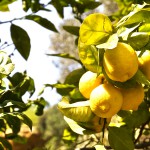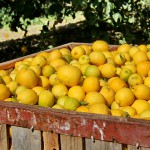Lemon Oil
Citrus limon (L.) Burm. F.
Harvest: May - July
We reported at the end of the first quarter than there could be some difficult times ahead for Argentinian lemon oil. The crop forecasts, growing fresh fruit demand (in export markets) and the predicted fruits available for processing would leave a hole not just in Argentina’s supply but the global lemon markets. The only question was how big that hole would be and now that we’re in July we’ve started to see these potential problems unfold.
Heavy rains and flooding at the end of last year and the beginning of 2017 have led to a 10% fall in Argentine citrus production this year according to forecasts released by Federcitrus and the USDA in April. However many are now suggesting this was underestimated and the fall will be between 20%-30%! This is disappointing news to many, especially those producers in Argentina who would have hoped to take advantage of the reopening of the Brazilian market after an 8 year absence and the end of a 16 year US ban on imports – two factors which will increase demand for fresh fruit both now and in the future. Mexico also announced in July that its doors are to be re-opened for imports.

Whilst production is likely to be down 10% on last year, it is more significantly down on a 10- year average and as such prices for fresh fruits have risen in recent weeks.
With the fresh fruit market still the most attractive avenue for most sellers in terms of revenue, it will be the processing market that suffers the most. Supplies to processors are likely to reduce between 15-20% on 2016 figures, unless of course they pay the higher prices, which will be reflected in the juice and oil price.
As this scenario has been on the cards for some months many of the major buyers have ensured they took sufficient cover. As a result, large volumes of oil have been purchased in recent weeks/months, to the point where not many producers in the region are prepared to make new offers. Those who do have surplus stocks are looking to capitalise on these market pressures, which have seen prices increase 20% in the last few weeks
Where this will end is likely to be down to how far the major end users have covered as continued pressure on demand will certainly keep prices rising.
Market prices USD 40.00 /kilo

 Ultra International B.V.
Ultra International B.V.








